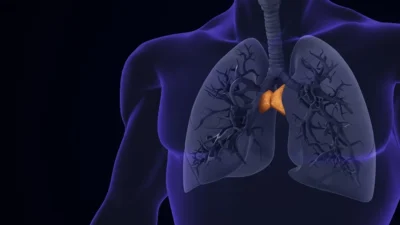Researchers working with data from the Dog Aging Project have found that post-translationally modified amino acids (ptmAAs), which are generated from protein metabolism, are useful in determining the biological ages of dogs.
The Dog Aging Project
With enrollment beginning in 2020, the Dog Aging Project (DAP) is an initiative to study canine aging [1], and its well-known co-director Matt Kaeberlein sits on our Scientific Advisory Board. Its purpose is twofold: to see how aging and age-related diseases affect these companion animals and to give researchers useful data that may be applied to human beings. Unlike laboratory mice in controlled conditions, the dogs enrolled in the DAP live with humans, so environmental effects are similar. The DAP is akin to human cohorts such as UK Biobank, although follow-ups can be conducted much more rapidly due to dogs’ naturally shorter lifespans.
There has been previous work done on analyzing the changes in canine metabolism with age, and it revealed substantial differences associated with age, diet, sex, and breed [2]. Breed is a major factor in analyzing dog aging; some breeds live twice as long as others [3].
This study builds on that work by using data from the DAP’s precision cohort, which initially consisted of 784 dogs that were specifically selected for deep molecular screening [4]. These dogs represent a cross-section of canine companions in the United States; five-sixths of them were neutered or spayed, the sex ratio was balanced, and there was a representative mix of breeds, including mixed-breed dogs. These dogs were also healthier overall than the dogs in the main DAP, a much larger cohort that contains roughly 50,000 animals.
A broad base of metabolites
A total of 133 metabolites was analyzed in this study, including carbohydrates, fatty acids and fatty esters, phosphate molecules, and amino acid derivatives. A principal component analysis found that, unsurprisingly, many of these metabolites varied strongly by factors other than age; sex, breed, weight, and sterilization status had notable effects, and genetic relatedness had even stronger effects than breed.
Age, however, did affect 48 of the 133 metabolites. Two groups were particularly enriched with age: carnitines and ptmAAs. Many other metabolites decreased with age, and not all ptmAAs were increased, either; methionine sulfoxide and hydroxyproline decreased, while tryptophan, glutamine, alanine, and N-terminally acetylated phenylalanine were increased. There were also “ambiguous” amino acids that are not consistently post-translationally modified, and the researchers omitted them from further analysis.
The metabolic connection
The changes to the abundance of ptmAAs with aging was found to be uncorrelated with changes to the abundance of their precursors. Therefore, these changes must result from either changes in how they are formed or changes in how they are removed. The researchers found evidence that these abundance changes were caused by a common source that affects all of these amino acids at the same time.
Further work found that these changes were not related to diet; being fed by ordinary people, some of these dogs had diets that varied from the common baseline of dry kibble, but dietary differences did not affect the age-related ptmAA differences.
Instead, these changes were found to be most likely due to changes in kidney function and protein catabolism. BUN, a well-known marker of kidney health, was strongly correlated with changes to ptmAAs, as was creatinine, a marker of protein turnover. In the case of hydroxyproline, there was a strong association with urine specific gravity (uSG), another marker of kidney health.
While relatively limited in scope, this study lays the groundwork for better understanding at least one key aspect of canine aging. In human beings, these proteins have been found to be useful as biomarkers [5]; using them in dogs is a step towards more completely assessing how they age.
Literature
[1] Creevy, K. E., Akey, J. M., Kaeberlein, M., & Promislow, D. E. (2022). An open science study of ageing in companion dogs. Nature, 602(7895), 51-57.
[2] Puurunen, J., Ottka, C., Salonen, M., Niskanen, J. E., & Lohi, H. (2022). Age, breed, sex and diet influence serum metabolite profiles of 2000 pet dogs. Royal Society Open Science, 9(2), 211642.
[3] Yordy, J., Kraus, C., Hayward, J. J., White, M. E., Shannon, L. M., Creevy, K. E., … & Boyko, A. R. (2020). Body size, inbreeding, and lifespan in domestic dogs. Conservation genetics, 21(1), 137-148.
[4] Prescott, J., Keyser, A. J., Litwin, P., Dunbar, M. D., McClelland, R., Ruple, A., … & Promislow, D. E. (2025). Rationale and design of the Dog Aging Project precision cohort: a multi-omic resource for longitudinal research in geroscience. GeroScience, 1-24.
[5] Johnson, L. C., Martens, C. R., Santos-Parker, J. R., Bassett, C. J., Strahler, T. R., Cruickshank-Quinn, C., … & Seals, D. R. (2018). Amino acid and lipid associated plasma metabolomic patterns are related to healthspan indicators with ageing. Clinical science, 132(16), 1765-1777.







